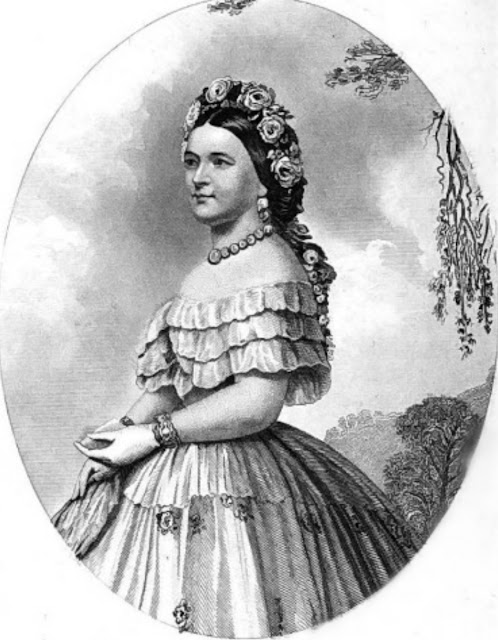Looking at the Carts Burn in the east end of Greenock today,
although mostly culverted, it is easy to see why there were once so many mills
in this area. The water gushes down this
burn, and for a long time, its power was put to good use turning the
waterwheel of a grain mill that used to stand on its banks. The mill was popularly known as Kennedy’s
Mill, also known as Cartsburn Mill and sometimes as
the Easter Mill of Greenock.
 |
| View of Greenock from the east |
While the facts and historic details of places that are no
longer in existence give a good idea of what once stood, I think that poetry
gives a much more meaningful insight into places as they are a personal view
rather than a general description. Published
in 1845, a poem “The Road Round by Kennedy’s Mill” by Greenockian Allan Park
Paton, writer, historian and librarian (to name but a few of the man’s talents)
gives us his recollections of the area when he was young.
The steam carriage now rushes angrily o’er
The fields, where in youth’s golden years I have ranged;
The streams where I tracked my flag-boats are no more,
And the dells where I lay reading ballads are changed;
But a few of the haunts of my boyhood can show
Those features, so dear in the past, to me still,
And one of the few, where I yet love to go
Of an eve, is the road round by Kennedy’s Mill
The quiet little road round by Kennedy’s Mill.
In 1792 the 99 year lease read:- “that miln called the Eastern Miln of
Greenock, with the miln-house land astricted multures, miln dues, services and
sequels to the same with the water-dam and inlair belonging to the said miln,
with power to the tacksmen any time within the said space to take down the miln
and miln houses, and convert them to any use they please, they being obliged to
leave buildings equal in value to the houses and miln standing on the miln
lands, with are hereby declared to be worth at the commencement of the tack the
sum of £25 sterling, and leave the same sufficiently habitable at the issue of
this tack”. The tacksmen could construct
dams for collecting water from the burn.
The mill passed through various hands and was used for
various purposes until in 1805 it was converted back to a corn mill by Matthew
and James Bryce, millers. They also had
a nearby mill called the Ingliston Mill.
A fire destroyed that mill and it was locally named the “Burnt
Mill”.
.JPG) |
| Remains of an old wall beside the Carts Burn |
The next owners of the mill were David Beath and John
Maitland. (The dam at Whinhill was sometimes called
Beath’s Dam). In 1830 Cartsburn Mill was once again for sale. It was purchased (for £2500) by Sir Michael
Shaw Stewart on behalf of Shaws Water Joint Stock Company (later along with the
Whinhill Dam came into the possession of the Water Trust of Greenock.) There was once a forge attached to the mill
which was destroyed by a flood in 1835.
The Kennedy family then became the millers at Cartsburn, thus the
name “Kennedy’s Mill”. However in the 1860s
Alexander Kennedy left Greenock and with new, improved mills opening all around Greenock's hills, the mill fell into disuse. It was demolished in 1893.
Allan Park Paton gives us a lovely, idyllic description of the mill itself in another verse of his poem:-
The cot by the way, on whose front roses smiled,
And the tall mill itself, with its slow-going wheel,
Its high open doors where the white bags were piled,
And its many small windows, bedusted with meal,
Its dog, its gay poultry, its lamb tied above,
Near the green lane behind that led on to the hill-
Ah! These were the sights that I warmly did love,
As I strolled on the road round by Kennedy’s Mill,
The quick turning road round by Kennedy’s Mill.
In his first verse Paton noted how much the area had changed since his boyhood years. I was going to say that he would not recognise the place now, but that would be wrong. There is once feature of the area which still proudly (and loudly) winds its course down to the river and that is the Carts Burn.
.JPG) |
| The Carts Burn, Greenock |







.JPG)

.JPG)

.jpg)






.JPG)

.JPG)
.JPG)
.JPG)
.JPG)
.JPG)
.JPG)




%20Greenock.JPG)





.JPG)
.JPG)
.JPG)








.JPG)
.JPG)
.JPG)